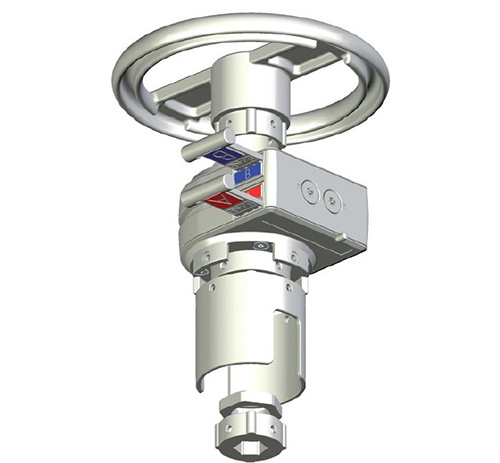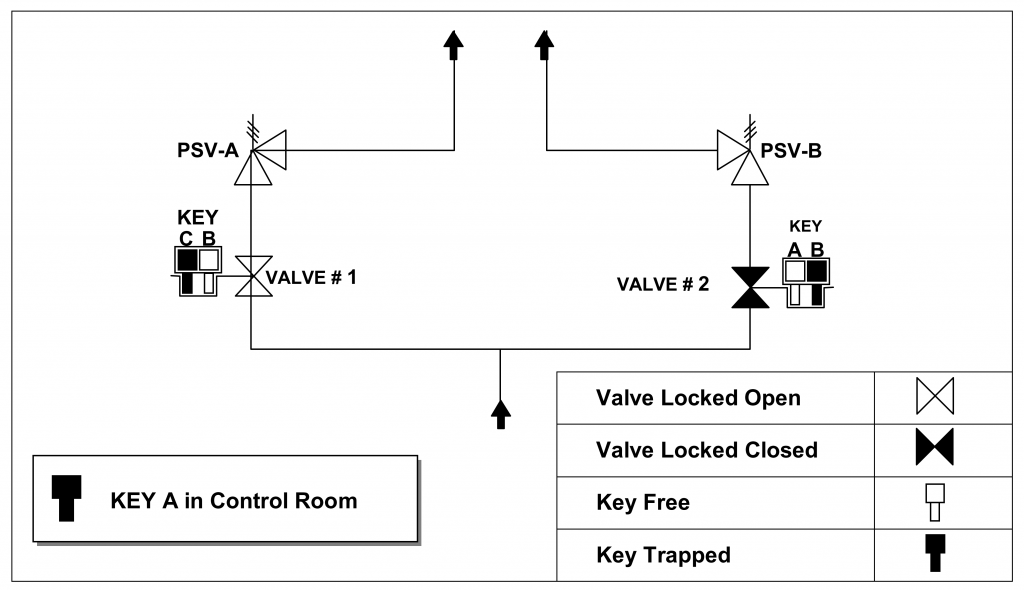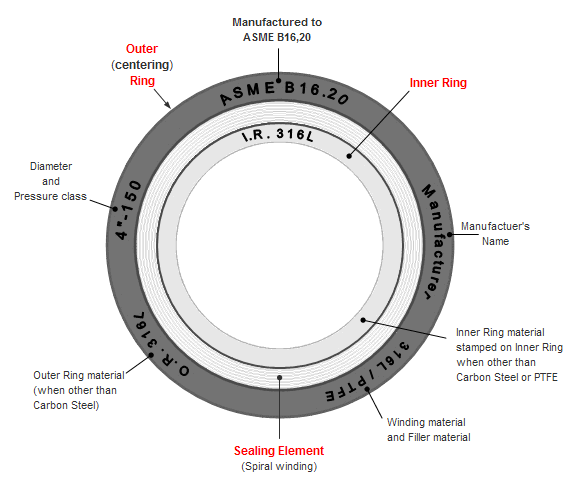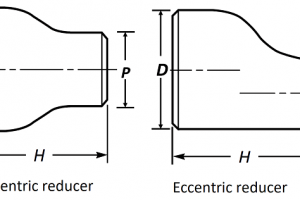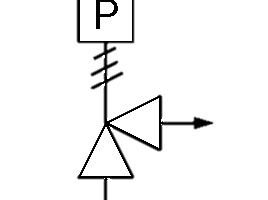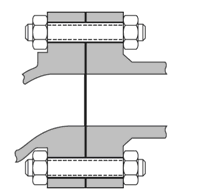Valve interlock system is a safety mechanism used in industries to ensure proper sequence of valve operation. Valve interlock system is used to prevent unintended operation of valve that could lead to catastrophic failure. By using valve interlock we can ensure correct opening and closing of safety valves.
Table of content:
1. What is the Valve Interlock?
2. Objective of the Valve Interlock system
3. Typical Valve Interlock System
3.1. Valve Interlock System Example
What is the Valve Interlock?
A valve interlock is a dual-key assembly which locks the valve in two positions - open and closed - with one key trapped within the lock assembly and one key free.
To change the valve position (“open to close” or “close to open”), two keys need to be inserted into the lock assembly, and the free key can only be released when the valve is in the open or closed position.
Objective of the Valve Interlock system
Valves play an important role in safety of operation in many process industries, especially in chemical and petroleum industry. If a valve is opened in wrong sequence, it could cause a release of hazardous material. That's why, the opening and closing of valves, especially block valves on PSVs etc., in the wrong sequence can lead to serious consequences such as human fatal injuries, loss of production and damage of equipment.
Therefore valves critical for safety of the operations can be equipped with interlock system to ensure that valves are operated in a safe sequence and maintained in a safe position. Interlock systems use mechanical or electrical devices to prevent valves to open or close in wrong sequence. These interlocks also prevent valves from being operated by unauthorized personnel.
The valve interlocks not only control the opening and closing sequence of process valves but also prevent their unauthorized operation.
Typical Valve Interlock System
The types of interlock system are based on the principle of key exchange. The lock is arranged such that valves can only be operated in a predetermined sequence from locked open to locked closed or locked closed to locked open which is designed to maintain production, availability and safety of systems. The lock mechanism is designed to ensure that valves are always either fully open or fully closed.
Generally, the system is based on operating principle of one key free when valve is locked closed and the other key free when valve is locked open. Following is a typical case explain valve interlocking system and its sequence of operation.
Valve Interlock System Example:
This type of Interlock System is designed to mechanically interlock two Pressure Safety valve having two block valves so as to prevent isolation of both the relief valves at the same time. The normal operating condition is shown in the figure 1, wherein:
- One PSV (PSV-‘A’) is operational and other (PSV-‘B’) is standby.
- Block Valve #1, in lock open position.
- Block Valve #2, in lock closed position.
- Initiating key “A” in the Control Room.
The basic purpose of this system is to change over of PSV-‘A’ operational to PSV-‘B’ operational.
Sequence of Operation
The sequence of operation starts from the normal operating condition.
Changeover sequence from PSV-‘A’ operational to PSV-‘B’ operational
A. Obtain Key ‘A’ from Control room
B. Insert Key ‘A’ into Valve #2
- Open Valve #2
- Lock open the valve by removing Key ‘B’
C Insert Key ‘B’ into Valve #1
- Close Valve #1
- Lock close the valve by removing Key ‘C’
D Return Key ‘C’ to Control room. (Changeover is complete)
It is clear from the sequence that valve #1 can only be closed with key B, upon opening of valve A. Hence both PSVs will never be closed simultaneously, ensuring that at least one PSV is always available for equipment protection.
